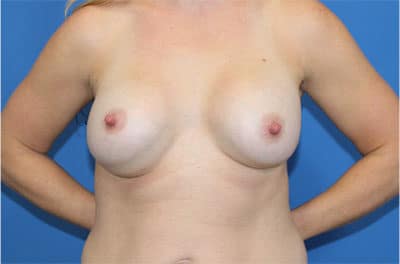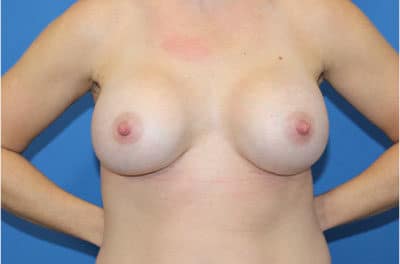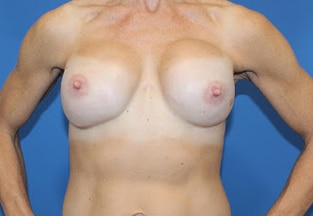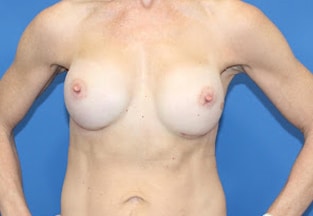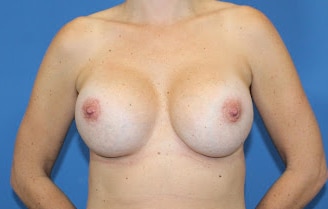What is Revision Breast Augmentation?
Augmentation revisions are performed in Washington, DC, for any of the following reasons: typically, implant removal and/or removal of internal scar tissue. A change in the internal architecture of the implant pocket is often performed.
There are a variety of reasons for breast augmentation revision:
- Implant Rupture – While the rupture rate for the new Motiva 6th-generation implants is below 1%, the rupture rate for older-generation silicone and saline implants is approximately 1% per year. At 10 years, there is approximately a 10% chance that the implant can rupture. Women should always be aware that they could have a rupture. It’s essential to follow up with a plastic surgeon every five years to have your implants checked for potential rupture. MRI scans and high-resolution ultrasounds are also useful tools in diagnosing a rupture. Dr. Pittman is equipped to perform high-resolution ultrasound in the office to detect an implant rupture.
- Aging Breasts – With time, the perky fibrous tissue of the breast is replaced with fatty tissue, and the ligaments that support the breast become lax. This leads to breast ptosis (AKA saggy breasts), which causes the breast to start falling off the implant and create what is commonly called a “snoopy deformity.”
- Implant Malposition – Implants, particularly those placed under the muscle, can shift downward or toward the sides over time. In these cases, patients complain that one breast appears lower than the other or that both breasts are starting to sag. Women also complain that the implants are dramatically moving to the side when they lie on their backs. This is referred to as “lateral breast drift” and is more common in women with saline implants than in those with silicone implants.
- Capsular Contracture – Every breast implant forms a small amount of scar tissue around it. This is the body’s way of isolating a foreign object. However, in the case of capsular contracture, the scar tissue becomes thickened, the breast becomes too stiff, and the implant’s position changes.
- Implant Size Change – As women age, their goals regarding implant size may change. Patients may desire smaller or larger implants.
- Implant Removal – Women may not want their implants anymore after a time. Those who have had implants placed at a young age sometimes experience this with changes in perspective.
